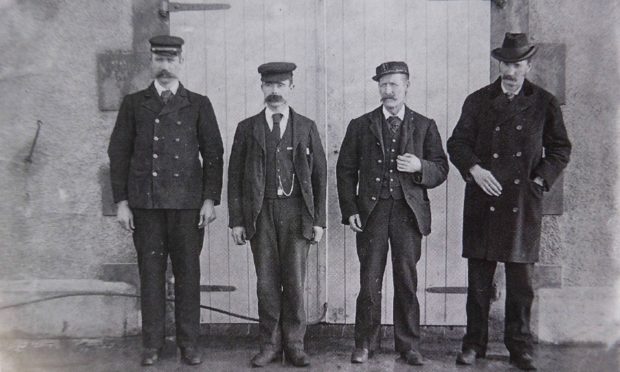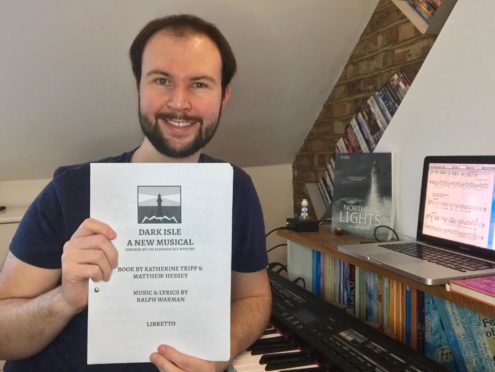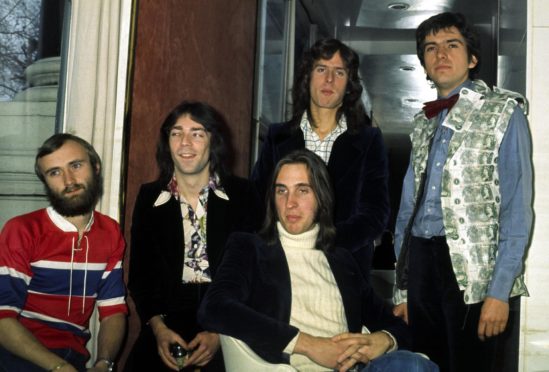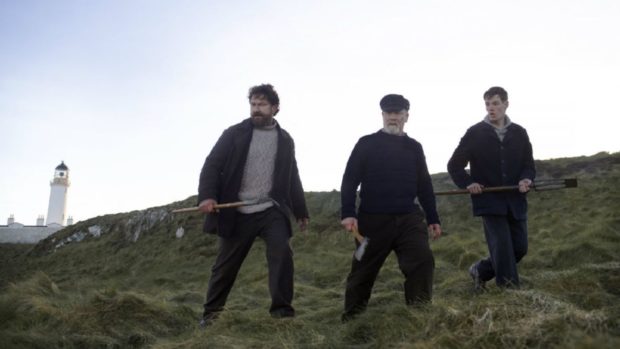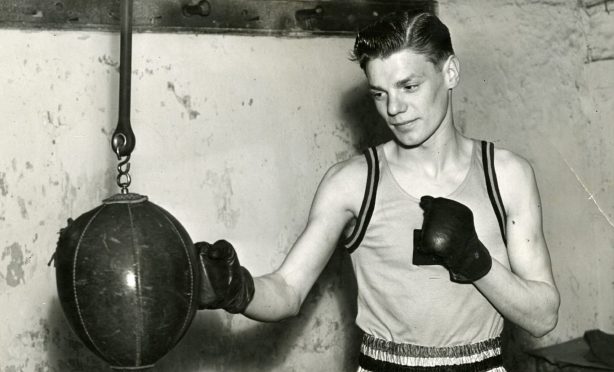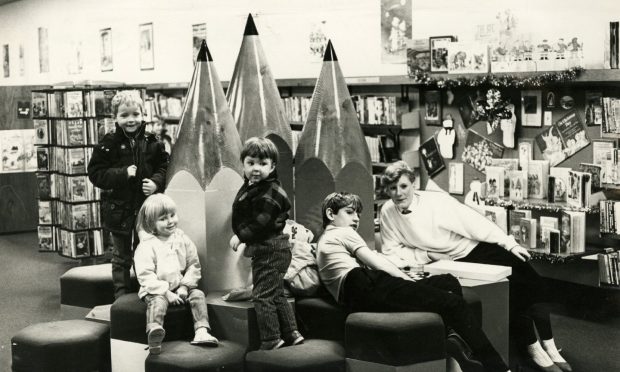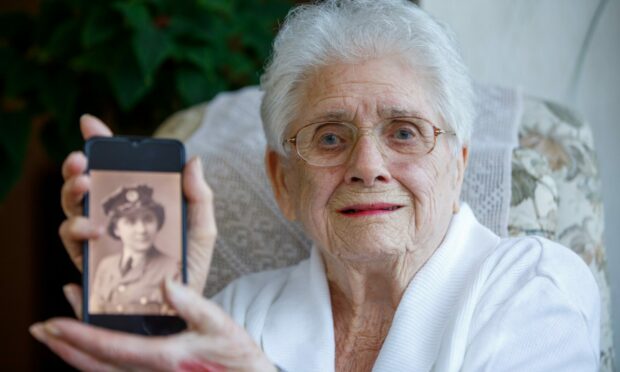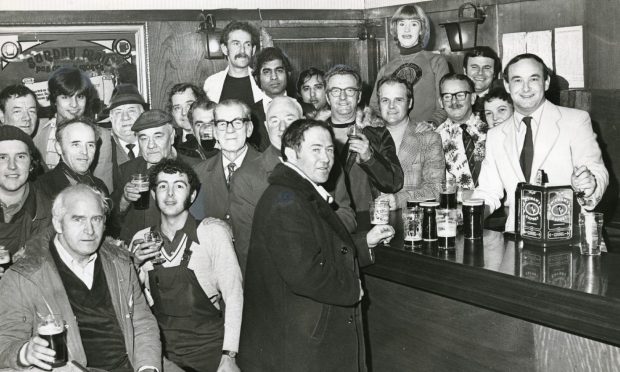The vanishing men of the Flannan Isles lighthouse has inspired a new musical based on the mystery that still baffles scholars to this day.
It was on Boxing Day 1900 that it was discovered that James Ducat, 43, Thomas Marshall, 28, and Donald McArthur, 40, had vanished from their temporary Alcatraz.
Despite months of investigation no trace was ever found of the three men who left two widows and six children behind.
Dark Isle will bring the story to life again
London-based composer Ralph Warman has transformed the story into a musical and the cast includes Marnie Yule from Perth and Katy Reynard who grew up in Aberdeenshire.
“Our musical Dark Isle is based in a lot of factual historical research about the men and their lives upon which we have built our own versions of possible events,” said Ralph.
“Despite initially wanting to delve into the many fantastical theories surrounding this mystery, we decided to narrow down our story to one which is focused on the keepers’ characters themselves, navigating both their lives and those of the families they left behind.
“Through their eyes we uncover what happens when you throw three men with individual experiences, thoughts and pressures together in amongst the catalyst of a treacherous storm.
“2020 has given us some great opportunities to begin to understand a little of how the keepers might have felt, isolated away from the outside world with just each other for company.
“Our own experiences of lockdown have allowed us to start to imagine some of the inner struggles that the keepers might have been facing at the time of their disappearance.
“One of the exciting aspects of Dark Isle is that we have explored the women that stood alongside the keepers.
“There isn’t as much written about them from 1900s except their relationships to the men, so we have had a real chance to extrapolate and weave deep interpersonal relationships between our women in the show.
“The male keepers – although alone on the island – were not alone in their lives, and we wanted a chance to see the women who were there after the storm clouds lifted.
“We will be continuing to develop and workshop the show this year, potentially recording a cast album before premiering.
“It has been a joy to be able to bring this story to life and to find out about these fascinating people with lives vastly different from ours over 120 years on.”
Mystery inspired artists, film-makers and writers
The mystery has already inspired artists and writers including Wilfrid Wilson Gibson whose 1912 poem was the first example of it making its way into popular culture.
Peter Gabriel and Mike Rutherford from Genesis wrote and recorded The Mystery of Flannan Isle Lighthouse in 1968 while working on their first album and the disappearance of the keepers was also was the inspiration for the composer Peter Maxwell Davies’s modern chamber opera The Lighthouse in 1979.
Hollywood A-lister Gerard Butler, Peter Mullan and Connor Swindells would go on to play the three men when the mystery was made into a movie in 2018.
Ralph said he first became aware of the tragedy when his grandmother gave him a commemorative centenary article on the story back in 2000.
He started writing his own tale based on the mystery before he rediscovered the article towards the end of his musical theatre training at Mountview in London.
“A few months prior to this I had the opportunity to watch a live radio play set in the 1950s written by one of my friends Katherine Tripp who was also studying on the course and I approached her to write the libretto,” said Ralph.
“She accepted and in turn approached and brought on our second book writer – Matthew Hessey – with whom she had previous experience collaborating with.
“Together Katherine and Matthew have created a beautiful and imaginative depiction of the events that may have unfolded and led to the tragic disappearance of the keepers.
“Amongst our current workshop cast we have two true Scots.
“Marnie Yule, who portrays Thomas Marshall’s mother Mary, is originally from Perth, and Katy Reynard, who plays James Ducat’s wife Annie grew up in Scotland and her family is now based in Banchory-Devenick, Aberdeen.
“Since beginning this project we have developed a close relationship with the Northern Lighthouse Board to promote the show to a wider audience.”
What really happened back in 1900?
Ralph was also put in contact with Lewis-based director and producer Elizabeth MacBain who provided the crew with source material about the keepers themselves and their families, as well as detailed information regarding the construction of the lighthouse and period news articles which documented the disappearance back in 1900.
A popular explanation was that one keeper had murdered the other two before throwing himself into the sea in remorse — McArthur was known to hate this posting and was known to be violent.
Passing ships noted at the time that the lighthouse was lit on the night of December 14 but they said it was out the following evening.
The Lighthouse Board’s supply tender Hesperus set sail the next day to investigate but because of wild winter storms the ship was unable to reach Flannan.
Day after the day the ship tried to approach the island without success and night after night the lamp at the top of the 75-foot-high tower remained ominously dark.
The raging storm did not subside until Christmas Day and it was Boxing Day before the sea was calm enough to allow the Hesperus to reach the island.
James Harvie, the captain of Hesperus, attempted to reach them by blowing the ship’s whistle and firing a flare, but was unsuccessful.
A boat was launched and Joseph Moore, the relief keeper, was put ashore alone at the foot of the 200-foot-high cliffs.
A canary was starving on its perch
He climbed the 160 steep steps and found no sign of his three fellow keepers.
As he reached the bottom of the lighthouse he found the door was closed, as were all the doors to the outhouses and living quarters.
Upstairs in the 75ft-high tower, a canary was starving on its perch and the lighthouse log and work notes for two days were on a slate.
In the days after the discovery of the abandoned lighthouse, the crew of the Hesperus made thorough searches of the island, hoping to find a clue.
At one of the harbours they discovered considerable damage, with part of an iron rail wrenched out of the concrete and a rock estimated to weigh a ton dislodged.
Turf on top of a 200ft cliff had been ripped away from the edge but there was no sign of any of the men.
Everything was in order.
The lighthouse log was kept up to date until December 15.
However in the days running up to the men’s disappearance some strange entries had been made.
One said ‘James Ducat irritable’ while another said ‘Donald McArthur crying’.
The final entry read: ‘Storm ended, sea calm. God is over all’.
Who were the vanishing men?
The principal keeper was James Ducat, who came from Arbroath and had spent two decades in the lighthouse service.
Ducat, who was a married man with four children, was selected to run the lighthouse while it was still under construction and had spent 14 months on Eilean Mor.
Thomas Marshall was the youngest of the trio and the second assistant keeper.
Donald McArthur, a married man from Breasclete, was an old soldier who was standing in for William Ross, the first assistant keeper, who was on extended sick leave.
The fourth keeper, Joseph Moore, wasn’t on the island as it was his two weeks off.
It was concluded that due to the very bad weather on the island, the men must have left the lighthouse for some purpose or other, probably to secure gear or to find out what damage had been done at one of the landing places, and had been caught by an unexpected large roller and swept into the sea.
